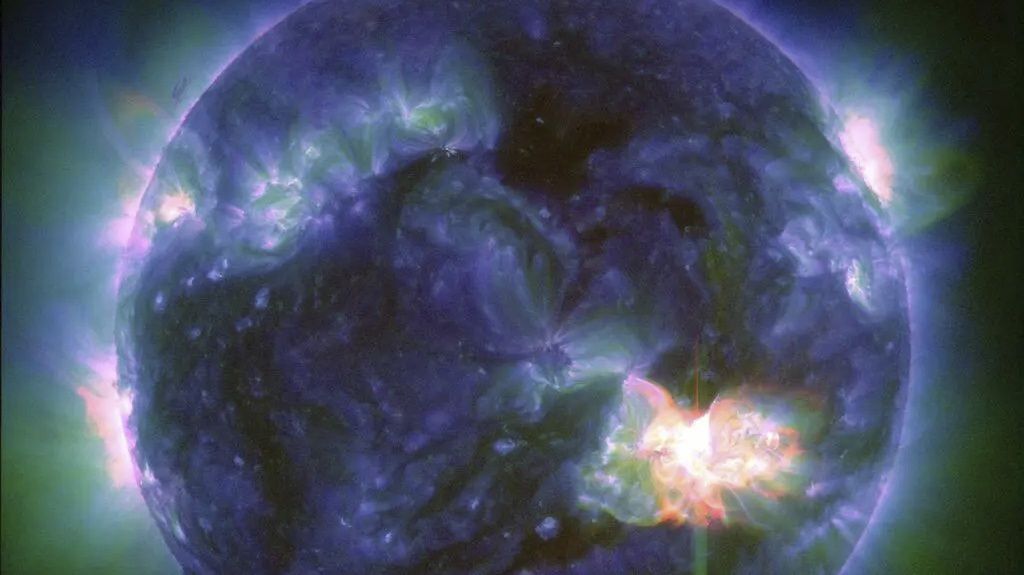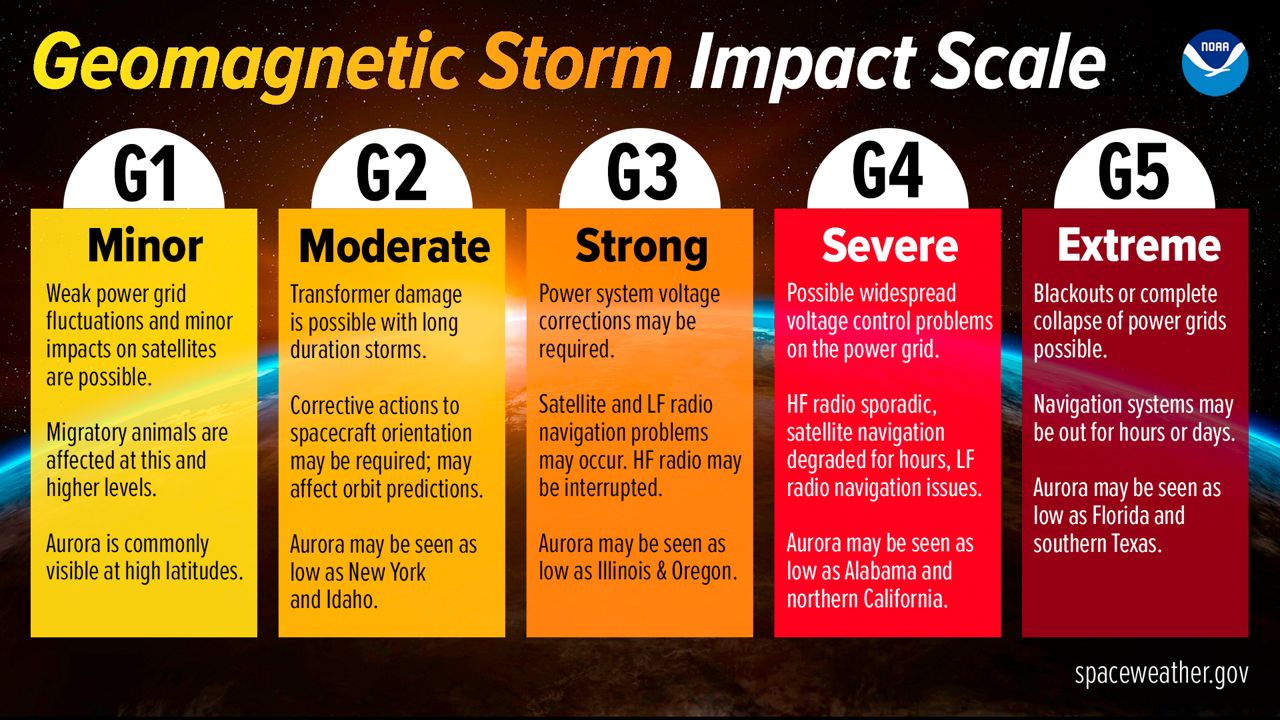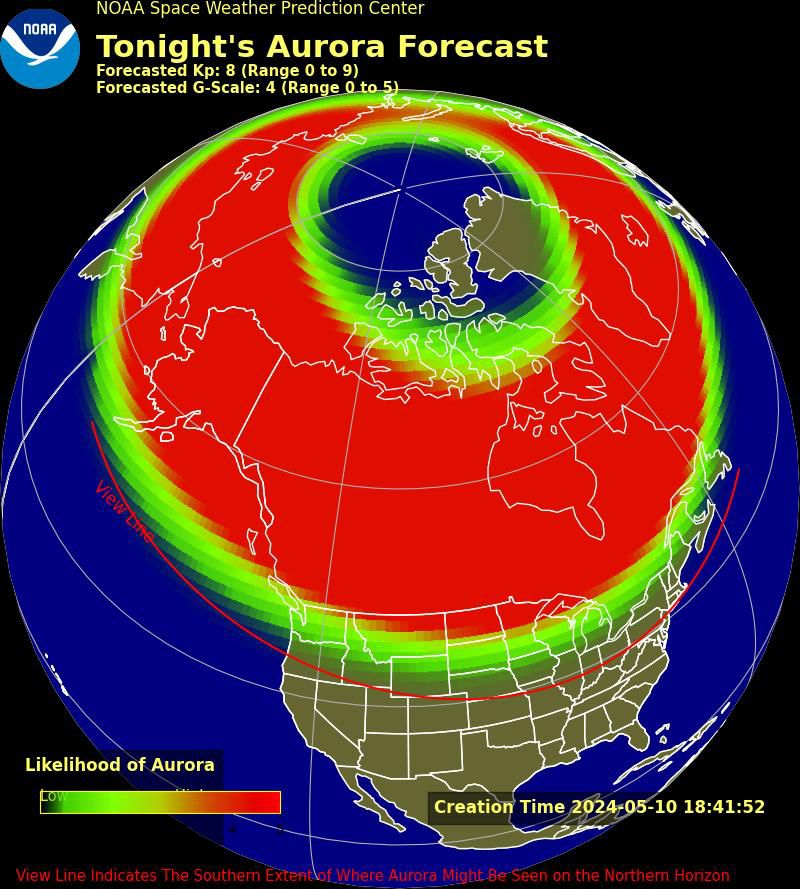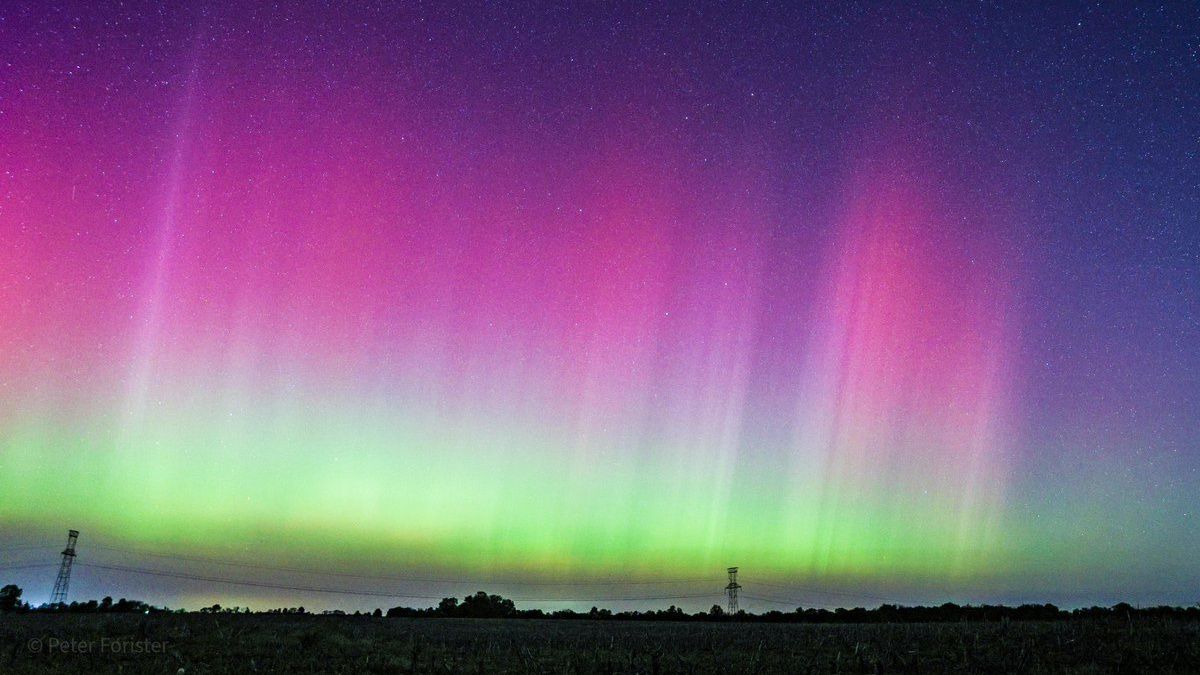A series of solar flares from groups of sunspots on the surface of the sun have hurled solar material toward the earth which will result in a geomagnetic storm and visible auroras across much of the northern United States.
Several solar flares from a cluster of sunspots measuring 16 times the diameter of Earth have erupted over the last few days, sending plasma and magnetic fields from the sun into space toward Earth. This eruption, called a Coronal Mass Ejection (CME), is expected to reach the earth late Friday night into Saturday, resulting in a geomagnetic storm.

Geomagnetic storms have the potential to affect both infrastructure in near-Earth orbit and on the Earth's surface, potentially causing disruptions in communication, the electric power grid, navigation, radio, and satellite operations. Additionally, these storms can lead to stunning aurora displays.
NOAA's Space Weather Prediction Center uses a scale to measure the intensity and impacts of geomagnetic storms ranging from G1 to G5. On May 9, 2024, the NOAA Space Weather Prediction Center issued a Severe (G4) Geomagnetic Storm Watch, the first since 2005 for May 10 and 11, 2024. At this magnitude in ideal conditions, auroras may be visible as far south as Alabama and northern California.

In Wisconsin, we are anticipating showers and thunderstorms to roll through the state Friday evening, exiting to the east by midnight. Clouds should clear out enough overnight in most places to try and catch a glimpse of the northern lights. Although a long exposure camera is typically best at capturing the northern lights, scientists believe they may be visible with the naked eye as far south as the red line on the map below.

For optimal viewing conditions, steer clear of excessive light or light pollution. The darker your surroundings, the greater your chances of glimpsing the auroras. Direct your gaze low on the northern horizon. Higher elevations can give you a better view of the horizon, enhancing the quality of your viewing experience.
The window of time for the most ideal viewing conditions across the state will likely be from 11 p.m. Friday through 4 a.m. Saturday.
If you are able to snap any photos of the northern lights, please share your photos with us for your chance to be featured on-air.
Our team of meteorologists dives deep into the science of weather and breaks down timely weather data and information. To view more weather and climate stories, check out our weather blogs section.



